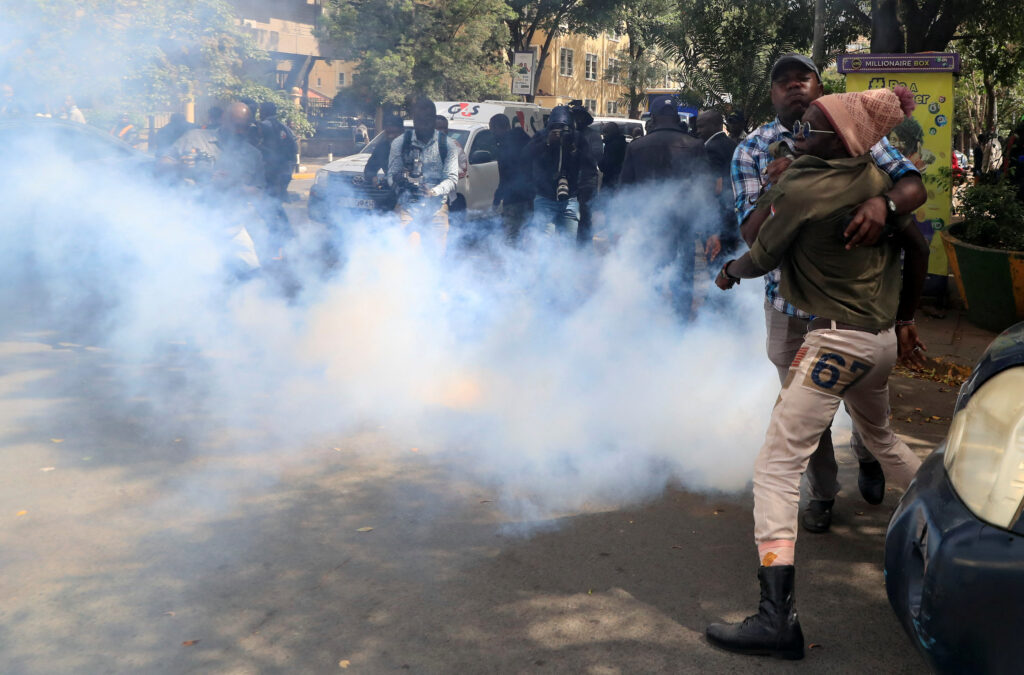- While the use of tear gas by authorities is intended to manage unruly gatherings, the severe and distressing effects on civilians highlight a pressing concern about its deployment, especially in densely populated or peaceful protests
- The necessity for immediate and effective response measures, such as moving to higher ground, flushing eyes, and seeking fresh air, is critical for mitigating its impact
Exposure to tear gas, a chemical agent used for crowd control, can be a distressing and painful experience. It causes severe irritation to the eyes, skin, and respiratory system. Knowing how to respond effectively can help mitigate the effects and prevent further harm.

Here is a comprehensive guide on what to do when exposed to tear gas.
1. Stay Calm and Protect Your Breathing
The first step is to stay calm, as panic can exacerbate the situation. Take shallow breaths to avoid inhaling too much of the gas. If you have a mask or cloth, use it to cover your nose and mouth. If you’re caught in a cloud of tear gas, try to hold your breath and close your eyes as much as possible until you can move to an area with cleaner air.
2. Move to Higher Ground
Tear gas is heavier than air and tends to settle in low areas. Moving to higher ground can help you escape the concentration of gas. Try to move against the wind, if possible, to reduce further exposure.
3. Flush Your Eyes
If your eyes are affected, flush them immediately with clean water. Do not rub your eyes, as this can increase irritation.
Follow our Facebook page for more updates:
If you have saline solution or an eyewash kit, use it to rinse your eyes thoroughly. Blink rapidly to help flush out the chemical.
4. Remove Contaminated Clothing
Remove any clothing that may have been exposed to tear gas, as the chemicals can linger on fabrics and continue to cause irritation. Place contaminated clothes in a sealed plastic bag to avoid spreading the chemicals. If you are assisting others, wear gloves to protect your hands from contamination.
5. Wash Exposed Skin
Wash your skin with soap and water as soon as possible. Avoid using hot water, as it can open pores and increase absorption of the chemicals. A mixture of water and baking soda can help neutralize the irritants on your skin.
6. Seek Fresh Air
Find an area with clean air to help reduce the effects of the gas. If you are indoors, open windows and doors to ventilate the space.
Follow our Facebook page for more updates:
If you are outdoors, move upwind and away from the area where the gas was deployed.
7. Avoid Using Oil-Based Products
Do not use lotions, creams, or other oil-based products on your skin, as these can trap tear gas particles and prolong irritation. Stick to water-based products for cleaning and soothing affected areas.
8. Use Milk or Antacid Solution for Mouth and Throat
If your mouth or throat is burning, rinse with a mixture of water and a small amount of milk or antacid solution. This can help neutralize the acid and provide some relief. Avoid swallowing the solution.
9. Seek Medical Attention
If you experience severe symptoms, such as difficulty breathing, chest pain, or persistent eye irritation, seek medical attention immediately. People with pre-existing conditions like asthma or other respiratory issues should be particularly cautious and consult a healthcare provider if symptoms worsen.
10. Document and Report the Incident
After you have taken steps to alleviate the effects of tear gas, document your experience, including any symptoms and the actions you took. Report the incident to local authorities or human rights organizations if you believe the use of tear gas was unjustified or excessive.
Follow our Facebook page for more updates:
Being prepared and knowing how to respond to tear gas exposure can significantly reduce the severity of its effects. Stay informed, protect yourself, and seek help if necessary. Your health and safety are paramount.

